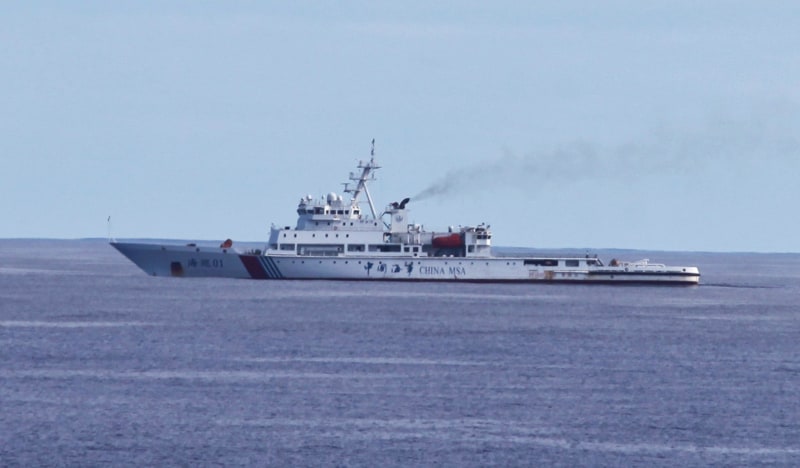The hunt for the vanished Malaysian airliner may refocus after a Chinese ship involved in the search reported picking up a “pulse signal” in the Indian Ocean on Saturday — but it’s not necessarily the smoking gun officials are hoping for.
Chinese news agency Xinhua said a black box detector deployed by the ship, Haixun 01, heard a signal at 37.5 kilohertz, which is specifically set aside for the black-box pinger as other underwater sounds don’t carry at that frequency.
Earlier Saturday, Xinhua also reported that a Chinese military aircraft spotted “white floating objects” close to the area where the electronic signals were detected.
So-called black boxes emit sonic pings for roughly 30 days. Malaysia Airlines Flight 370 disappeared four weeks ago on March 8 after leaving Kuala Lumpur en route to Beijing.
The black box verification is "all time-consuming, but you really don’t have a second."
William Waldock, an expert in aviation accident investigation at Embry-Riddle Aeronautical University in Prescott, Ariz., said the one-second pulse from a pinger is “a very distinctive pattern.”
“If it’s verified, it’s a major break in the case,” he told NBC News. “Frankly, they got lucky.”
But verifying that the pings were indeed generated by the missing aircraft's black boxes is not a quick process, according to NTSB crash expert Greg Feith.
“They only had [the pings] for a minute-and-a-half, which doesn’t make sense because the pinger itself is continuous, it’s not intermittent. Even if the battery was dying, it’s either working or it isn’t,” Feith said, adding: “The fact that the Chinese couldn’t find it again after they heard it, that makes me a little leery.”
Waldock said the spotty nature of the transmission would make sense, because the Chinese ship was probably sailing through the edge of the reception area. Pingers are designed to be detected within a 4-mile radius. Picking up the intermittent signal is expected to spark a more concentrated, more methodical search – not only by the Chinese, but by other ships from the international armada in the area.
Feith said Chinese searchers could now drop sonobuoys to pick up the signal again and verify that it is consistently pinging.
The buoys can also send back readings to help searchers triangulate on the black box’s location.
Errant pinger signals may also come from either a ship or equipment used in oceanographic research, he said, as those may transmit in frequencies close to 37.5 kHz.
 STRINGER/CHINA / CHINA NEWS SERVICE VIA REUTERS
STRINGER/CHINA / CHINA NEWS SERVICE VIA REUTERS
Confirming the signal is just the start. “If we’ve found the haystack, now we’ve got to find the needle,” Waldock said.
Feith said search teams would have to move all of their assets to that location to determine exactly where the main wreckage field is.
Searchers would then have to go underwater and map the area using submersibles with sonar capabilities and high-definition video capabilities to identify potential wreckage on the ocean floor.
Using underwater remote-operated vehicles or robots, investigators would then need to locate the cockpit recorder and the flight data recorder amid the wreckage.
But time is of the essence, Feith warned.
"That’s all time-consuming, but you really don’t have a second," he said.
While black boxes can survive for two years or longer, even if they are submerged in the corrosive salt water of the Indian Ocean, their batteries are likely nearly depleted and would stop emitting sonic pings sometime next week.
Waldock said the batteries could keep going for some time afterward, but the signal would “become fainter and fainter.”
As for the debris found not far from the area where the pulse signal was picked up, Feith said he's skeptical the floating objects would have come from the aircraft.
“After a month, you wouldn’t expect to see any kind of airplane debris in close proximity to those boxes," he said. "It would’ve moved a heck of a long way between then and now.”

















Postar um comentário